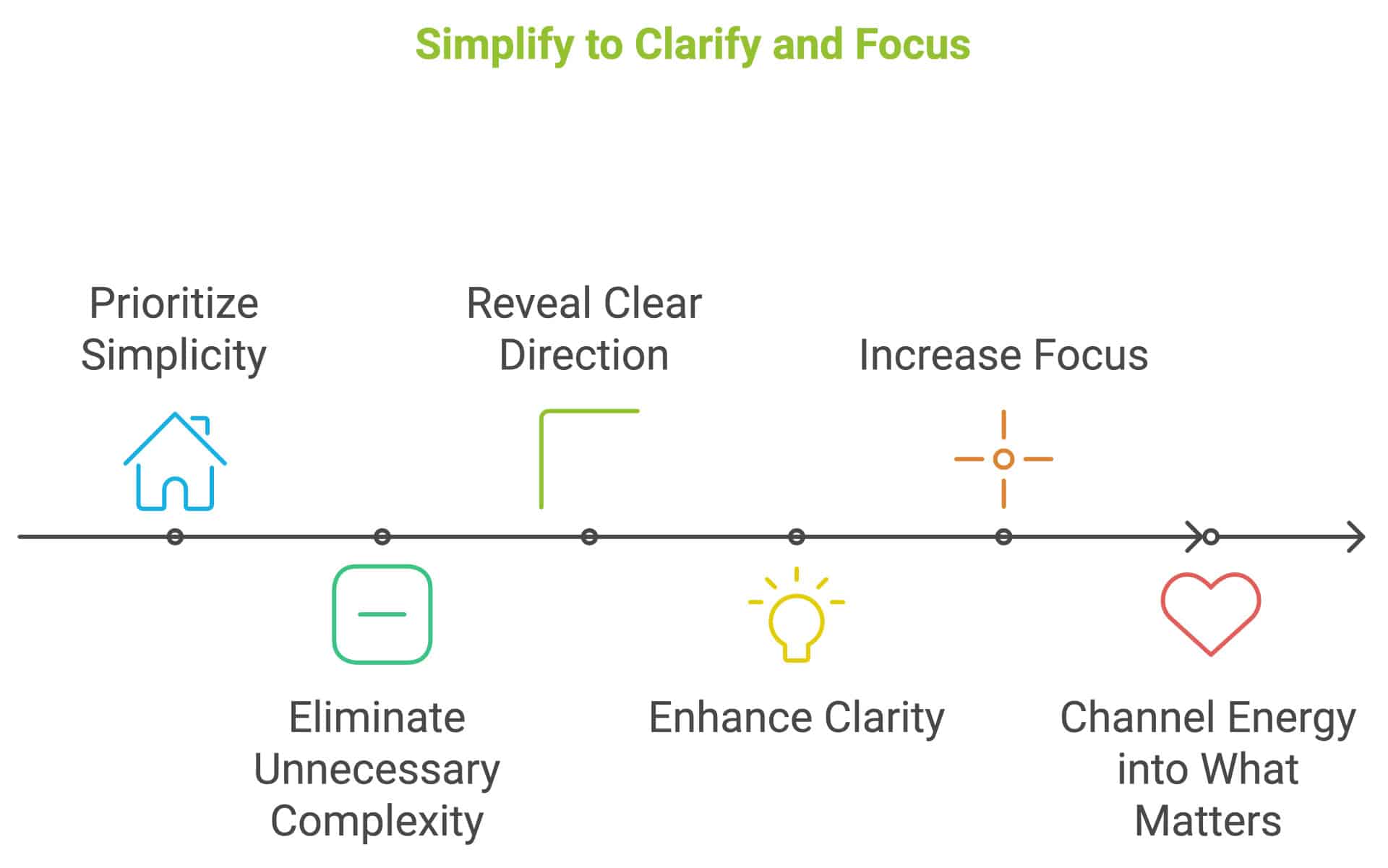Why Simplicity Should Be a Key Leadership Focus

In a world where businesses and teams are often weighed down by complexity, simplicity stands out as a cornerstone of effective leadership. It’s not just about doing things faster or cutting corners—it’s about making it easier for teams to succeed, reducing the barriers that slow them down, and creating a clear path for achieving the organization’s goals. Let’s dive into why simplicity should be at the top of any leader’s agenda if they want to enhance efficiency, boost engagement, and drive sustainable success.
Simplicity Fosters Clarity and Focus

At the core of simplicity is the drive for clarity. Overly complex strategies and convoluted processes often cloud the vision, making it harder for teams to know what’s expected of them. When leaders make simplicity a priority, they help strip away the unnecessary, revealing a clear direction for everyone to follow. This clarity brings focus—it allows employees to channel their energy into the things that truly matter, without being distracted by unnecessary details.
Enhanced Decision-Making
When processes are simplified, decisions happen faster. In today’s fast-paced world, agility is key, and simplicity in leadership makes decision-making far more efficient. When you reduce the clutter, teams don’t have to wade through layers of unnecessary information or convoluted protocols, and this allows for quicker, sharper responses to both challenges and opportunities. What’s more, simpler systems reduce the cognitive load on team members, which means they can focus on making good decisions without feeling overwhelmed.
Increased Efficiency and Productivity
Let’s face it—complex systems are productivity killers. Too many steps, too much red tape, and inefficiencies creep in. By cutting out the fluff and focusing on what’s essential, leaders can eliminate bottlenecks, streamline operations, and ultimately boost productivity. This not only leads to better results but also improves job satisfaction. When employees aren’t bogged down by redundant tasks or unclear processes, they’re more engaged, more motivated, and much more effective.
Better Engagement and Lower Turnover
Employees want to understand how their work contributes to the bigger picture. Simplicity in leadership demystifies roles, responsibilities, and processes, which leads to a higher level of engagement. When people understand what’s expected of them, and they can see the direct impact of their efforts, they become more invested in the success of the team. Engaged employees are happier, and happier employees stick around longer. By focusing on simplicity, you can reduce burnout and frustration, which are often byproducts of overly complex environments.
Facilitates Innovation
Contrary to what many believe, simplicity doesn’t kill creativity—it fuels it. When you clear away the clutter and free up mental space, your team has more bandwidth to think creatively. Innovation thrives in environments where people aren’t weighed down by unnecessary steps or processes. A simpler approach gives your team the room to experiment, to think differently, and to come up with new ideas. It’s often in the pursuit of simplicity that the most creative solutions emerge.
Scalability and Sustainability

As organizations grow, so too does the complexity. But leaders who prioritize simplicity from the start are better equipped to manage that growth. Simple strategies and processes are much easier to scale, making it possible for your organization to expand without falling into a tangle of complexity. Simplicity also supports sustainability—it ensures that as you grow, you don’t lose sight of your core objectives, and it helps create a structure that can adapt and evolve without buckling under the weight of unnecessary complication.
Implementing Simplicity in Leadership
Achieving simplicity isn’t about taking shortcuts or watering down essential processes. It’s about being thoughtful and intentional—evaluating what’s truly necessary and cutting away the excess. Leaders can start by auditing their existing processes, looking for redundancies or layers of complexity that don’t add value. Ask for feedback from your teams—they often know best where the bottlenecks are. And create a culture where simplicity is celebrated, not seen as taking the easy way out.
Simplicity is one of the most powerful tools a leader can use to build an efficient, productive, and innovative team. It clears the way for your team to focus on what really matters, helping them work smarter, not harder. In an increasingly complex world, the leaders who champion simplicity will be the ones whose teams thrive. Embrace it, and you’ll set your team up for sustainable success.
Written by Gordon Tredgold.
Have you read?
Countries Most in Debt to the International Monetary Fund (IMF).
Most Successful Unicorn Startups.
$100 Billion Club: Richest People With The 12-Figure Fortunes.
Largest electricity consumers in the world, by country (in terawatt-hours).
Countries that Export the Most Goods and Services.
Bring the best of the CEOWORLD magazine's global journalism to audiences in the United States and around the world. - Add CEOWORLD magazine to your Google News feed.
Follow CEOWORLD magazine headlines on: Google News, LinkedIn, Twitter, and Facebook.
Copyright 2025 The CEOWORLD magazine. All rights reserved. This material (and any extract from it) must not be copied, redistributed or placed on any website, without CEOWORLD magazine' prior written consent. For media queries, please contact: info@ceoworld.biz








